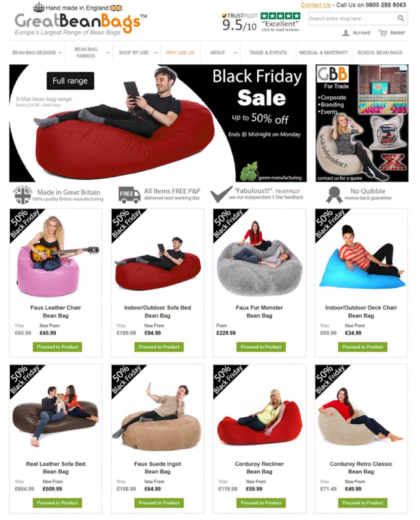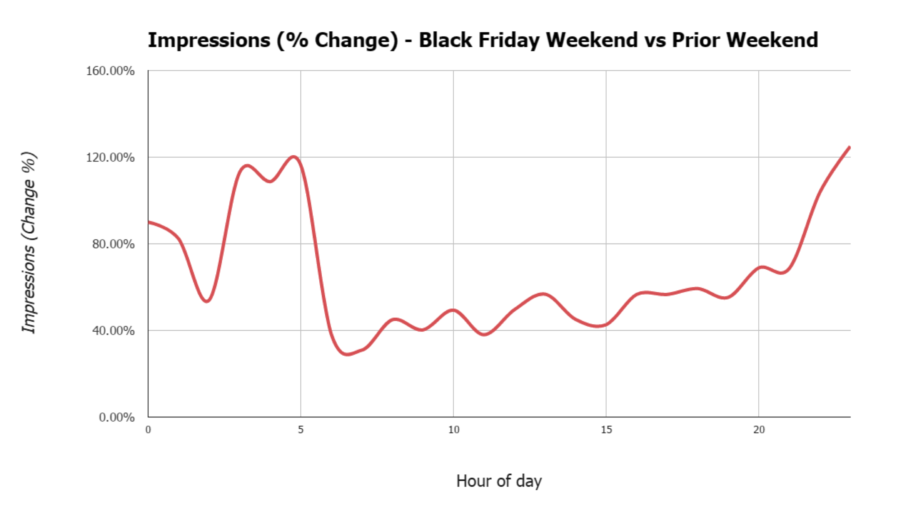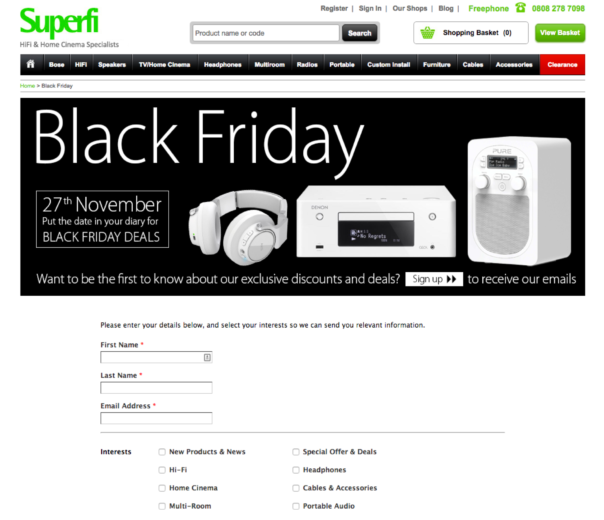Black Friday sales have existed long before ecommerce was recognized. For over 50 years, stores have tried and tested ways to ensure they make the most out of the valuable footfalls, even without the luxury of measurability that PPC provides.
Though many online advertisers are sharpening their toolkits to prepare for the weekend, too often, I find that ecommerce marketers make changes only to their ad copy in an attempt to entice users to embrace the holiday.
To ensure you make the most of the weekend, here are 6 lessons we can learn from our elder brother, the physical store.
1) Create An Experience
Bricks and mortar stores don’t just advertise a sale and expect customers to walk into their store and buy. The sale has to be demonstrated in-store also. True marketers will know that the experience must match (or better) the expectation to provide good levels customer satisfaction. Sound simple? That’s because it is.
To make the most of the holiday, your Black Friday offering needs to at least be clear and consistent across both your ad text and website.
- At the very least, your website copy should reflect the sales offering mentioned in your ads.
- If you have the resource, redesign areas of your site to reinforce the sales atmosphere (whether this is a banner, updated logo, or something more dramatic).
- You can also create unique ad extensions, with sitelinks and callouts referencing your sale, including the new Black Friday and Cyber Monday structured snippets
If you don’t create a consistent Black Friday experience beyond your ad text, expect high bounce rates from those customers looking for a quick bargain as they run over to your competitor’s site.

2) Keep The Doors Open
If customers can’t get into a physical store, they won’t buy the product. Similarly, if you’re not part of the ad auction, you might as well be closed. Retail stores tend to open earlier and close later on Black Friday weekend, anticipating the increased demand from savvy consumers.his increased demand is even more dramatic for online retailers.
- Day-parting adjustments should be reconsidered. Expect shoppers to be searching earlier and later for your product than on a typical week. If you normally limit your ads to office hours, open up your ad schedule to include the early birds and night owls.
- Boost your bids at peak times to offset the increased bids of your competitors.
- Similarly, if you have money to spend, ensure you increase your daily budget to ensure you don’t miss out on traffic towards the end of the evening.
If you have data from previous years, use it. Otherwise, make calculated assumptions based on current peak times. The following graph shows the percentage change in impressions for a sports clothing ecommerce store on Black Friday weekend 2014 compared to the previous weekend.

3) Be Present
For shoppers, Black Friday is exciting. The excitement is in part due to the large discounts available but is also due to the element of competition that a sales deadline creates. Customers need to battle against time and, crucially, other shoppers for great deals. This sense of urgency encourages customers to make quick purchase decisions, contributing to more sales.
Online, this urgency is not as apparent. Without other shoppers to fight against, customers can take more time to make decisions. It’s beneficial for online advertisers to renew a sense of urgency.
- Stimulate pressure by using dynamic countdown ads to force potential customers further down the decision-making process.
- This countdown can also be referenced on your website to reinforce the point.
- Using time-related phrases in your ad copy such as ‘hurry’, and ‘be quick’ prompts fast action, as does specific time frames such as ‘this weekend.’
4) Rearrange Your Store
Physical stores won’t just drop prices and expect customers to hunt down particular products, they’ll strategically place items in the store at eye level, with new displays and signposts to key sale products.
A similar approach should be taken online.
- Ensure your sale items are getting the impression share they deserve – push focus products in your Shopping feed by increasing bids for those products with heavy discounts (to identify focus products for larger accounts, I like to add custom labels in the Shopping feed).
- For more generic search campaigns, consider ‘Black Friday sale’ landing pages where offers can be highlighted, or discount codes displayed.

5) Be Personal
One advantage that physical stores have over online retailers is the human element. Good sales assistants will adapt their approach to different customers, especially those that have been in store before. For customers, online can often seem like a factory line.
It’s important to make your returning website visitors feel special. Treat them as individuals. Understand where they’ve been, what they’re looking for, and you’ll be more likely to convert their clicks to sales.
- Segment your audiences depending on the products/categories they’ve viewed, when they viewed them, and whether they’ve purchased in the past.
- Apply these lists to your campaigns with bid adjustments in line with perceived customer value.
- If you target RLSAs outside of your regular search campaigns, consider using different ad copy that gives the customer another reason to buy from your store. This can be a different USP, a different offer, or even a new discount code.
- Don’t forget that you can now add audiences in Shopping campaigns.
- Use customer match to make the most of your existing customer base in RLSAs, offering up similar and related products to visitors that are more likely to purchase.

6) Control The Crowd
Black Friday is infamous for the hot-headed rush of speedy shoppers.
To keep things running as smooth as they can, many stores will hire extra security to control the crowd. Without the ability to control large crowds, and good systems in place, stores can expect chaos and many valuable customers will buy from a competitor instead.
Likewise, it’s important for ecommerce websites to prepare themselves for the rush.
- Make it easier for potential customers to get to where they want to go, with helpful ad extensions that direct users to specific categories of your site.
- Optimize your order processes, ensuring there are no bugs. Make sure the journey from cart to purchase is as simple as possible.
- For newer businesses especially, it is crucial to test your server load capacity prior to the weekend, to make sure you can handle the traffic.
Summary
The above suggestions are second-nature to bricks and mortar stores, but many online advertisers do not take full advantage of the holiday season. Simply updating your ad copy is not enough. Whilst the tips I’ve mentioned barely begin to scratch the surface of physical store strategies, they demonstrate that there are still many things we can take on board from our elders.
On the other hand, PPC advertisers have unique advantages that physical stores will struggle to obtain, such as massive quantities of data and the ability to retarget at the customer level. A combination of new and old techniques will ensure you make the most of the holiday weekend this season.



